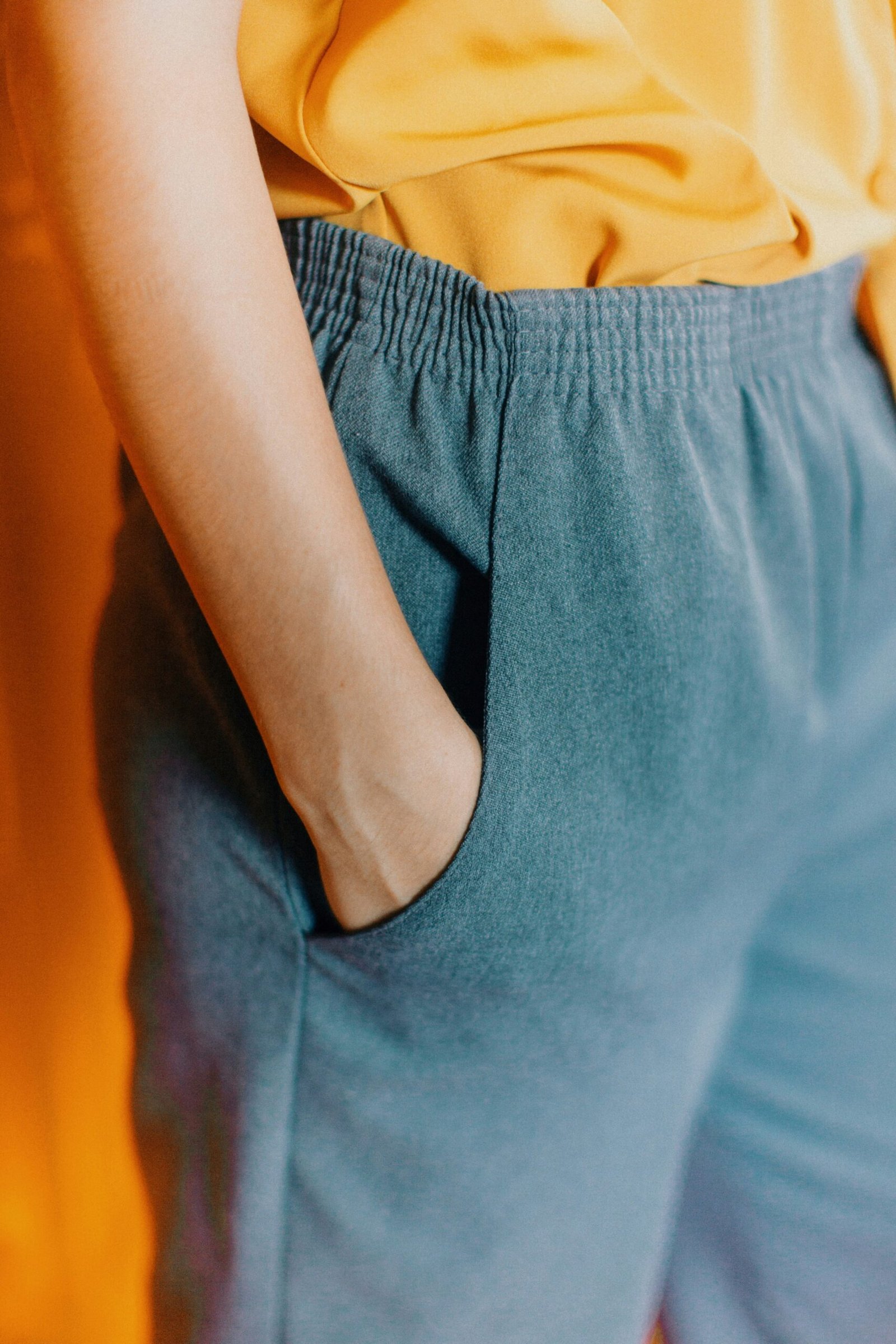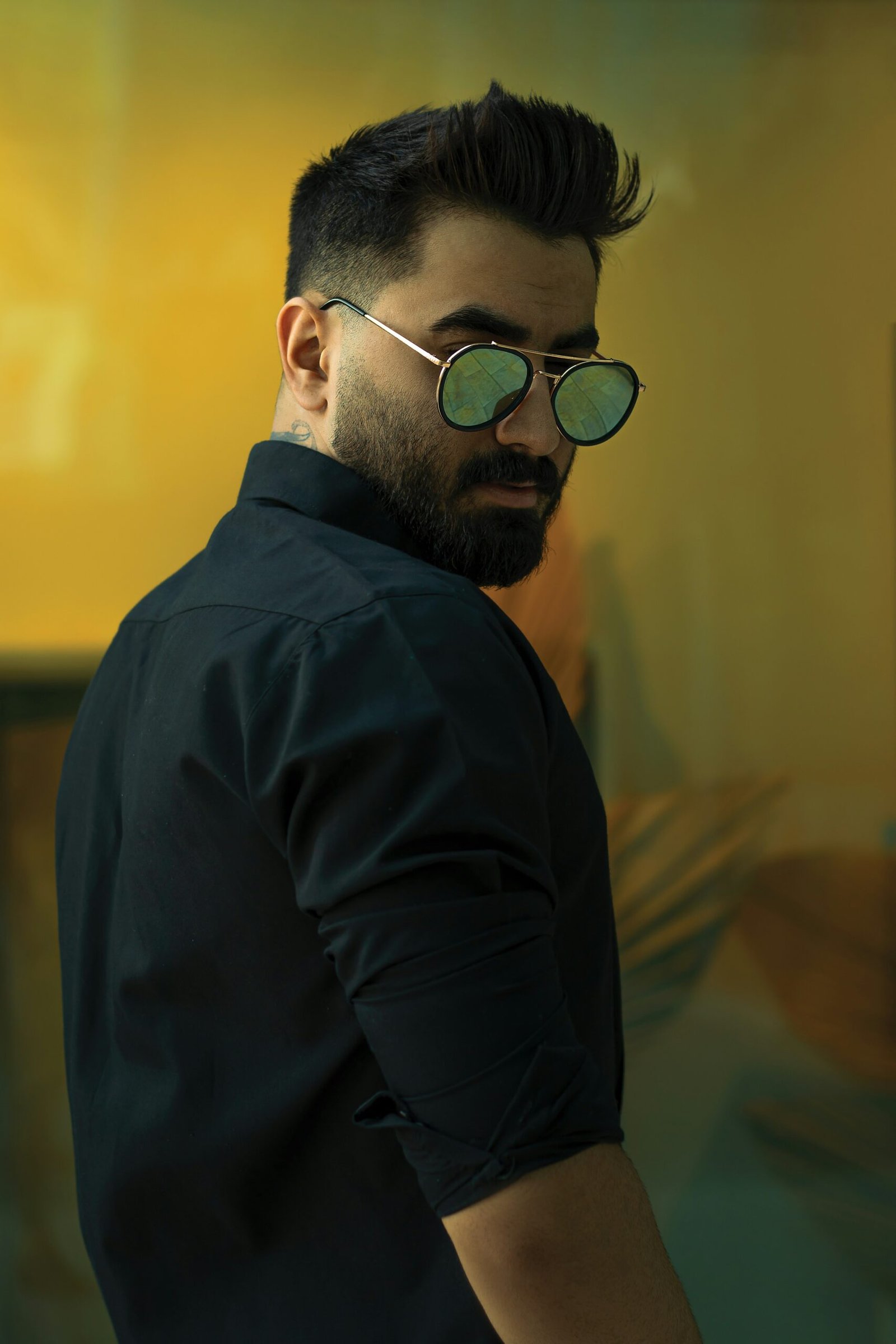Understanding Vintage Clothing
Vintage clothing refers to garments that are at least 20 years old, often characterized by their unique styles and craftsmanship which reflect the fashion trends of their respective eras. These items not only serve as personal attire but also as artifacts of cultural history, showcasing the evolution of fashion through decades. Each era, from the roaring twenties with its flapper dresses to the rebellious vibes of the seventies, has contributed distinct elements to the world of vintage garments.
The classification of vintage clothing can often lead to confusion, particularly when distinguishing between true vintage, retro, and second-hand clothing. True vintage garments are those that originated from the era they represent, possessing authenticity and nostalgia. Retro clothing, on the other hand, refers to modern reproductions that draw inspiration from past styles, often recreating patterns and silhouettes without the accompanying age. Second-hand clothing encompasses any pre-owned apparel, which may or may not qualify as vintage, adding another layer of complexity to the shopping experience.
What makes vintage garments particularly appealing to many is not just their age but also their unique characteristics. Vintage clothing often boasts high-quality materials, intricate craftsmanship, and techniques that are rarely found in contemporary fast fashion. Additionally, wearing vintage allows individuals to express their style in a way that is distinct from mass-produced clothing, fostering a sense of individuality and connection to the past.
In the realm of fashion, the significant allure of vintage clothing lies in its capacity to weave together personal history and broader cultural narratives, making it a captivating space worth exploring for any fashion enthusiast or novice collector. Understanding what makes these pieces noteworthy is crucial when embarking on a journey to unearth hidden gems within the vintage clothing market.
Researching Vintage Styles and Trends
Understanding vintage clothing entails a deep appreciation of the unique styles and trends that characterize different decades. Each era possesses distinct fashion elements that tell stories of cultural shifts, artistic movements, and societal changes. By familiarizing oneself with these styles, shoppers can efficiently identify pieces that resonate with their personal taste while appreciating the historical significance of the garments.
The 1920s, often referred to as the “Roaring Twenties,” was characterized by flapper dresses with dropped waists, intricate beadwork, and bold accessories. This decade celebrated a break from traditional attire, allowing for a more liberated expression of femininity through fashion. The 1930s saw the introduction of more tailored silhouettes, often reflecting the economic challenges of the Great Depression. Designs during this time emphasized elegant lines and practical textiles, leading to the popularity of dresses that flattered the shoulder line.
Transitioning into the 1940s, wartime rationing impacted fashion significantly, resulting in utilitarian styles. Women often wore dresses with structured shoulders and waistlines, blending femininity with a sense of practicality. The following decade, the 1950s, brought about an explosion of color and volume, manifesting in full petticoats, cinched waists, and playful prints inspired by the optimistic post-war outlook.
The 1960s introduced bold patterns, mini skirts, and a youthful spirit that defined an era of rebelliousness and change. This trend continued into the 1970s, where bohemian influences emerged, showcasing flared pants, earthy tones, and eclectic accessories. Finally, the 1980s are recognized for their extravagance, featuring oversized silhouettes, bold colors, and a penchant for statement-making fashion.
By researching these distinctive styles, shoppers can sharpen their ability to spot vintage treasures that align with their personal aesthetics and appreciate the timeless beauty of clothing that has traversed history.
Choosing the Right Shopping Locations
When embarking on the journey to find vintage clothing, the choice of shopping locations is paramount. Various venues offer distinctive selections that can significantly influence your ability to uncover unique, quality pieces. Thrift stores, consignment shops, flea markets, and online platforms each present their own set of advantages and challenges, making it essential to explore all available options.
Thrift stores are often the first stop for many vintage enthusiasts. These retail outlets typically sell secondhand clothing at affordable prices, allowing shoppers to sift through a wide range of items. When selecting a thrift store, consider factors such as location, store size, and reputation. Frequent visits to different thrift stores can enhance your chances of discovering hidden gems, as new inventory is added regularly.
Another worthwhile option is consignment shops, which tend to offer a curated selection of vintage pieces. Unlike thrift stores, these shops usually focus on higher-end or designer items. While prices may be steeper, the quality and unique characteristics of the clothing often justify the cost. Research local consignment shops and pay attention to their inventory rotates; stores that frequently change their offerings can provide an exciting shopping experience.
Flea markets are a treasure trove for vintage clothing seekers. With various vendors showcasing their wares, you can find a broad spectrum of styles and eras. To make the most of these markets, arrive early for the best selection, and be prepared to negotiate prices. Building rapport with vendors can lead to discovering unique items and even better deals.
Online platforms have become increasingly popular for vintage shopping. Websites and apps dedicated to vintage clothing allow you to browse an extensive selection from the comfort of your home. Carefully read descriptions and check seller ratings to ensure quality and authenticity. Combining these various shopping locations fosters a diverse collection and enhances the overall potential for unearthing vintage clothing treasures.
Mastering the Art of the Hunt
Embarking on a quest to find vintage clothing can be an exhilarating experience, but it often requires a keen eye and strategic approach. To successfully navigate through the myriad of clothing racks, it is essential to develop effective hunting techniques that will improve the likelihood of unearthing those hidden gems. First, it is advisable to go into the shopping process with an open mind. Vintage clothing spans various styles and periods, so being flexible in one’s expectations can lead to unexpected finds.
When sifting through racks, focus on the quality of the fabric and the craftsmanship of the garments. High-quality fabrics such as silk, wool, or sturdy cotton often signify well-made pieces. Additionally, inspect the construction details, such as seams and stitching. Vintage clothing should exhibit strong, clean lines and even stitches with no signs of fraying. Understanding how to spot these signs will enhance the search for authentic vintage pieces.
Patience and persistence are key virtues during a vintage clothing hunt. It can be tempting to rush through the racks, but taking the time to thoroughly examine each piece will yield better results. Set aside enough time for browsing, and consider visiting multiple shops or thrift stores to increase the chances of finding rare items. Connecting with fellow vintage enthusiasts can also be beneficial, as they may share recommendations or insights on the best places to shop.
To enhance the shopping experience, consider making it a social outing. Invite friends to join you on your hunt, as their perspectives may help highlight items you might overlook. A collaborative shopping experience can transform the process into a delightful adventure filled with laughter and discovery. By employing these strategies, you can master the art of the hunt and enjoy the thrill of finding unique vintage clothing.
Assessing Quality and Authenticity
When shopping for vintage clothing, assessing quality and authenticity is paramount to ensuring that you are investing in a genuine piece. The first step is to examine the materials used in the garment. True vintage clothing often features high-quality fabrics such as silk, wool, or cotton that are less common in today’s fast fashion. A close inspection of the texture and weight can reveal much about the item’s age and craftsmanship.
Next, look closely at the stitching of the vintage clothing. Well-made garments typically exhibit precise, even stitching without loose threads. A common indicator of authentic vintage is the presence of hand-stitched seams and facings, which were more prevalent before the rise of mass production. Industrial sewing techniques often leave telltale signs of their machine origins, such as overly uniform stitches or serged edges. Understanding these nuances can aid you in distinguishing between true vintage and replicas.
Labels and tags are also critical in evaluating vintage clothing. Researching specific brands or designers known for their craftsmanship can provide insights into the garment’s authenticity. Authentic vintage pieces often feature labels that showcase distinctive logos, care instructions, and manufacturing details that are indicative of their time. Additionally, looking for union tags on the inner label, which were used in the mid-20th century, can further validate the authenticity of the item.
To avoid fakes or replicas, shoppers should familiarize themselves with specific vintage styles and their associated construction methods. Awareness of red flags—such as modern tags, synthetic materials, or glaring discrepancies in design—can significantly reduce the risk of purchasing imitative pieces. By following these guidelines, vintage clothing enthusiasts can enhance their collection with genuine, high-quality garments that stand the test of time.
Understanding Sizing and Alterations
When shopping for vintage clothing, understanding sizing differences is crucial to finding the right fit. Vintage garments often differ significantly from contemporary sizing standards due to changes in manufacturing processes and fashion trends. For example, a size 8 in the 1970s might align more closely with a modern size 4 or 6. Therefore, relying solely on the tag may lead to disappointment. It’s essential to examine the measurements of the garment rather than only its labeled size. Always keep a measuring tape on hand to compare the dimensions of the clothing item to your own body measurements.
In addition to understanding how vintage sizing works, it’s beneficial to familiarize yourself with the cut and style of different eras. The silhouettes can vary widely; a size medium from the 1960s may have a completely different fit compared to that from the 1990s. Therefore, it is prudent to try items on whenever possible to assess fit, since many vintage pieces may have unique tailoring that contributes to their distinctiveness.
For pieces that do not fit perfectly, alterations can be an effective way to achieve the desired fit. Working with a professional tailor or seamstress is advised, as their expertise can ensure that changes enhance the garment without compromising its integrity. Look for tailors who specialize in vintage clothing, as they are more familiar with the nuances of older fabrics and construction techniques.
If you prefer a more hands-on approach, DIY alteration techniques can also be beneficial. Simple adjustments, such as taking in seams, shortening hems, or replacing buttons, can transform a vintage find into a personalized wardrobe staple. There are numerous online resources and tutorials available that can guide you through basic alteration methods. By understanding sizing and knowing how to make necessary alterations, you can confidently navigate the world of vintage clothing and uncover many hidden gems.
Budgeting for Vintage Finds
Shopping for vintage clothing can be an exciting adventure, yet it is essential to approach it with a well-defined budget. Knowing how to effectively allocate your funds can greatly enhance your experience and lead to successful finds without incurring excessive costs. Vintage clothing prices can vary widely, influenced by factors such as the item’s rarity, brand, condition, and era. On average, a budget of $50 to $150 can yield quality pieces, while more sought-after items may reach several hundred dollars.
Start by assessing your personal finances and determine a reasonable amount you are willing to spend on vintage clothing each month. This initial figure will serve as your baseline for budgeting. It is advisable to create a spreadsheet or a budgeting app to track your expenses, enabling you to monitor how much you’ve spent and how much you have left to spend on future vintage finds.
To maximize your budget while shopping for vintage items, consider frequenting local thrift stores, estate sales, flea markets, and online platforms dedicated to vintage clothing. These venues often provide the opportunity to discover hidden gems at more affordable prices. Additionally, keep an eye out for seasonal sales or promotional discounts that can further stretch your budget.
Be mindful of impulse purchases, which can derail your carefully crafted budget. Implement a cooling-off period where you give yourself a day or two before making a decision on a potential purchase. This practice can help ensure that you truly want the item and that it fits within your financial plan. Furthermore, set aside a small portion of your budget for unforeseen finds; this allows flexibility for those exceptional pieces that might catch your eye. By carefully managing your budget, you can build a stylish vintage wardrobe without financial strain.
Caring for Vintage Clothing
Caring for vintage clothing requires a thoughtful approach, as these garments often entail unique fabrics and construction techniques that differ from modern apparel. To ensure that your cherished vintage pieces remain in excellent condition, it is essential to understand proper cleaning, storage, and preservation methods tailored to their specific needs.
When it comes to cleaning vintage clothing, it is crucial to start by reading any care labels that may still be attached. If the label is missing, perform a spot test on an inconspicuous area of the fabric to determine how it reacts to different cleaning solutions. For delicate fabrics such as silk, lace, or chiffon, consider opting for gentle hand washing with cold water and mild detergent. Alternatively, professional dry cleaning may be necessary for certain items, particularly those with intricate embellishments or structural components.
Storage plays a critical role in preserving vintage garments. It is advisable to keep them in a cool, dry, and dark environment to prevent deterioration caused by light exposure and humidity. Avoid hanging heavy items, as the weight can distort their shape; instead, utilize padded hangers for lighter clothes while folding heavier pieces. Acid-free tissue paper can be placed within the folds of garments to help maintain their shape and prevent creases.
Additionally, protecting vintage clothing from moths and other pests is vital. Using lavender sachets or cedar blocks can deter insects without the risk of harmful chemicals. For long-term preservation, consider using breathable garment bags to shield these delicate items from dust while still allowing air circulation.
By implementing these care strategies, you can ensure that your vintage clothing continues to be a source of enjoyment. With proper cleaning, thoughtful storage, and ongoing preservation efforts, these timeless pieces can maintain their beauty and originality for years to come.
Building a Vintage Wardrobe Over Time
Assembling a vintage wardrobe requires both strategy and patience, making it a rewarding journey for fashion enthusiasts. To begin, it is essential to develop a clear vision of your personal style. This may incorporate specific eras, colors, or patterns that resonate with you. By establishing a cohesive aesthetic, you can more effectively curate pieces that not only complement each other but also reflect your individuality.
One effective strategy for building a vintage wardrobe is to start with foundational pieces that offer versatility. Items such as classic denim jackets, tailored blazers, and timeless dresses are excellent choices. These staples can be paired effortlessly with contemporary clothing, allowing you to create various looks suitable for different occasions. For instance, a vintage dress can be styled with a modern belt and ankle boots to bridge the gap between old and new.
Furthermore, it is important to embrace the concept of mixing and matching vintage items with modern garments. This approach not only enhances your overall style but also allows you to breathe new life into older pieces. For example, pairing a vintage blouse with high-waisted trousers can create a chic outfit that retains a fresh appeal. Accessories also play a crucial role in this process; vintage handbags, jewelry, and hats can add character to any outfit and elevate the overall vintage aesthetic.
Lastly, patience is key when hunting for hidden gems. Frequenting local thrift stores, estate sales, and online marketplaces will increase the likelihood of discovering unique garments. Keeping an open mind during your search will expand your wardrobe options and allow you to develop an eclectic style that is uniquely yours. By gradually curating your collection, you can build a vintage wardrobe that not only showcases historical charm but also maintains contemporary relevance.











